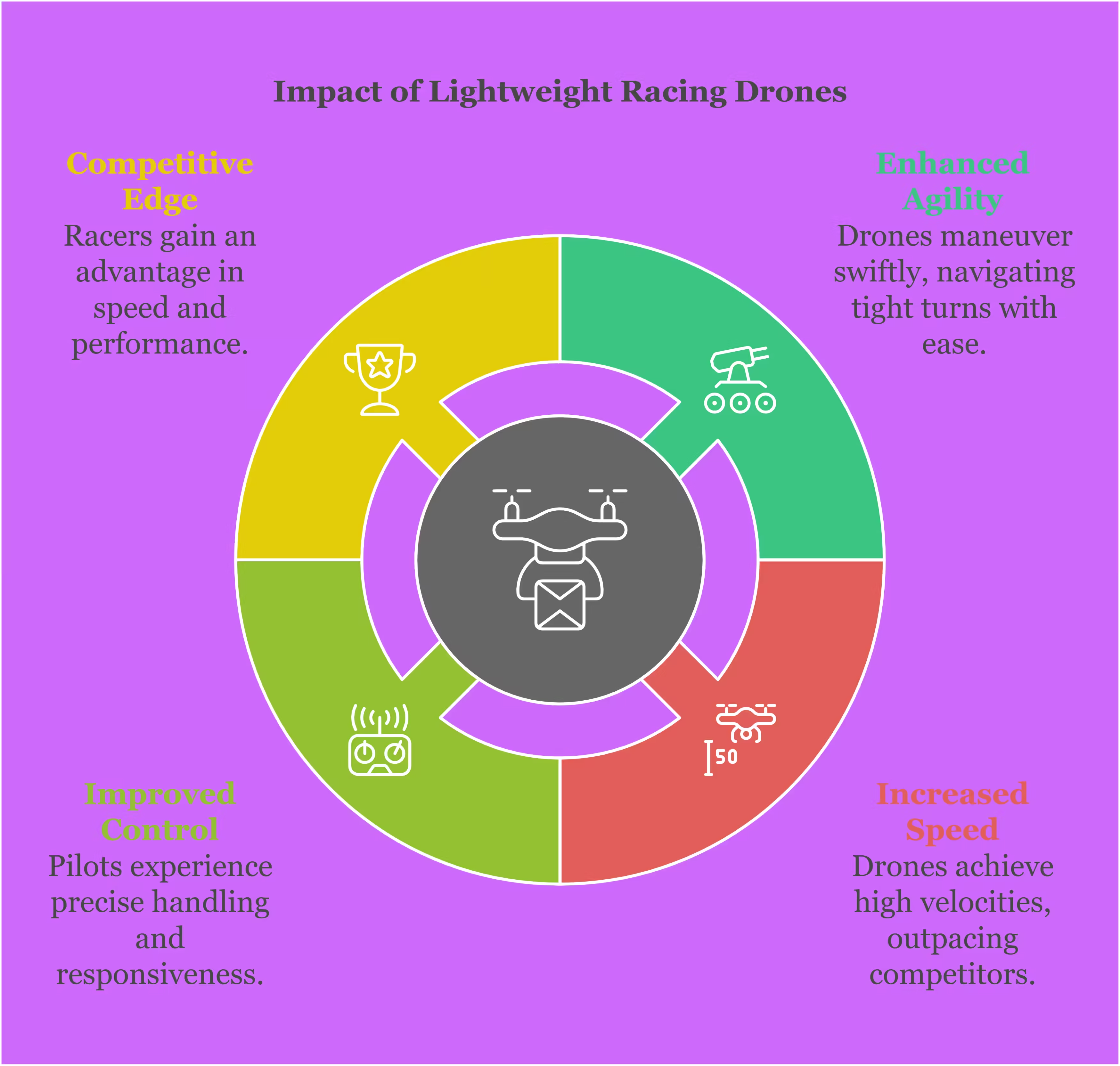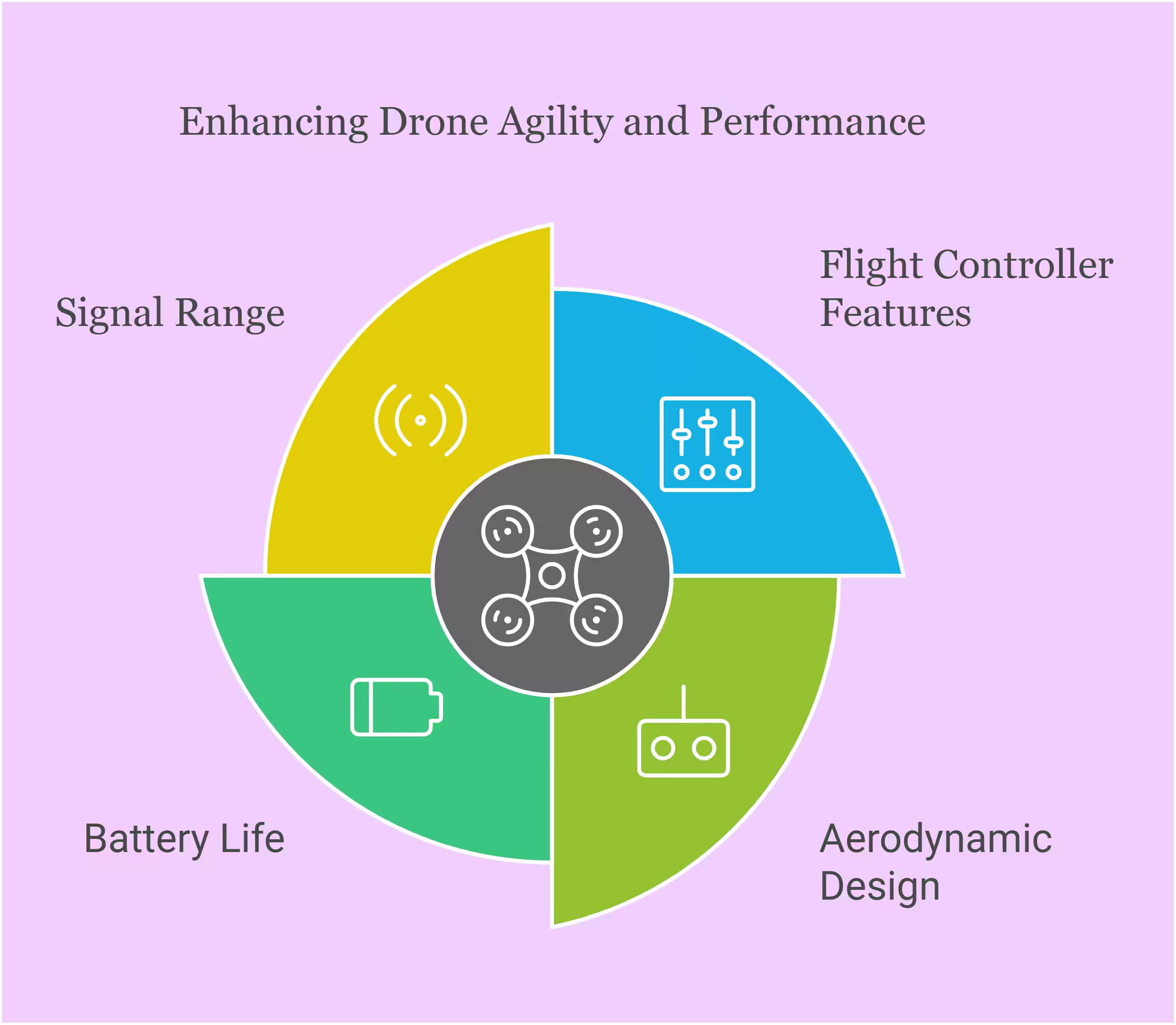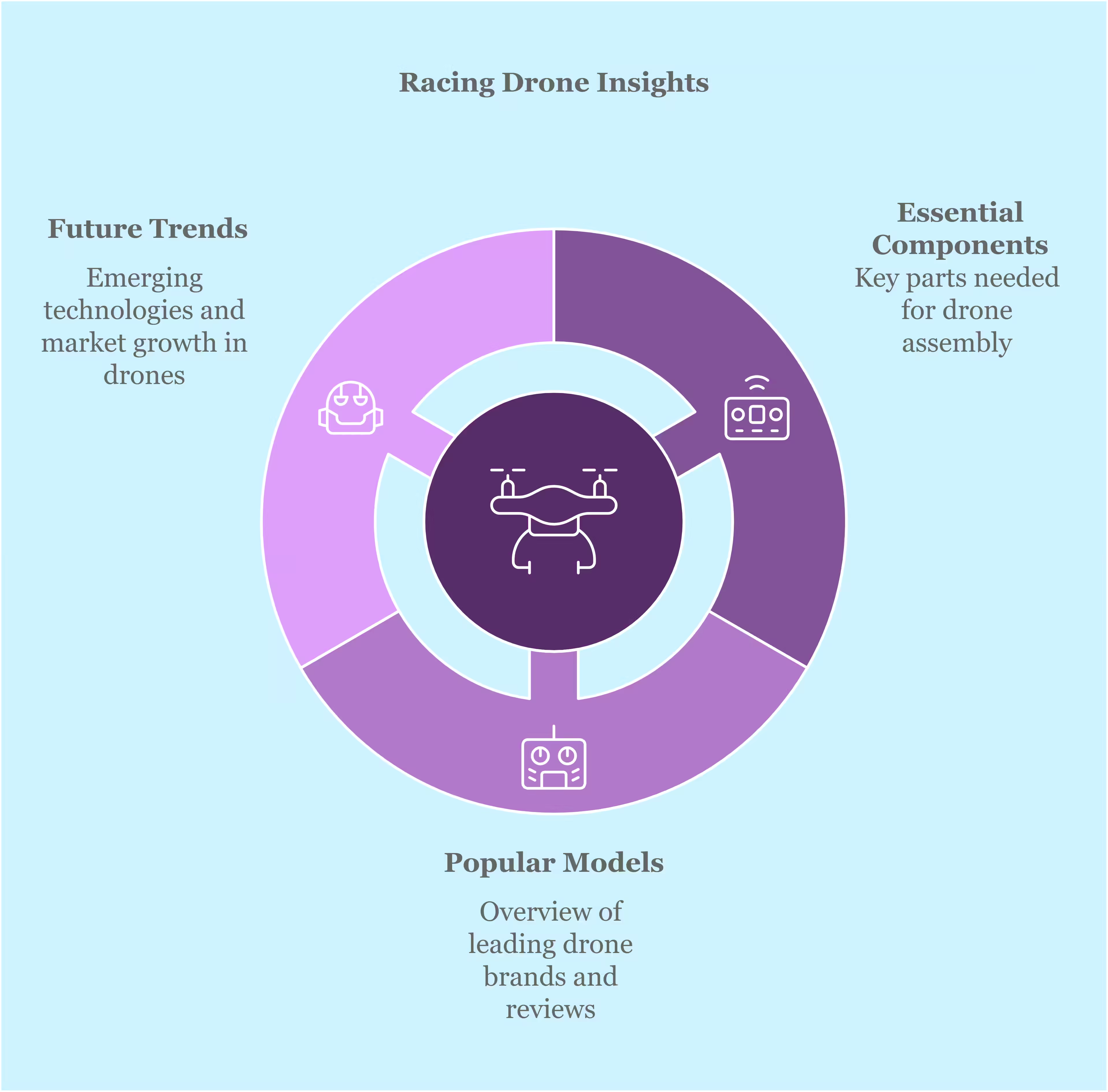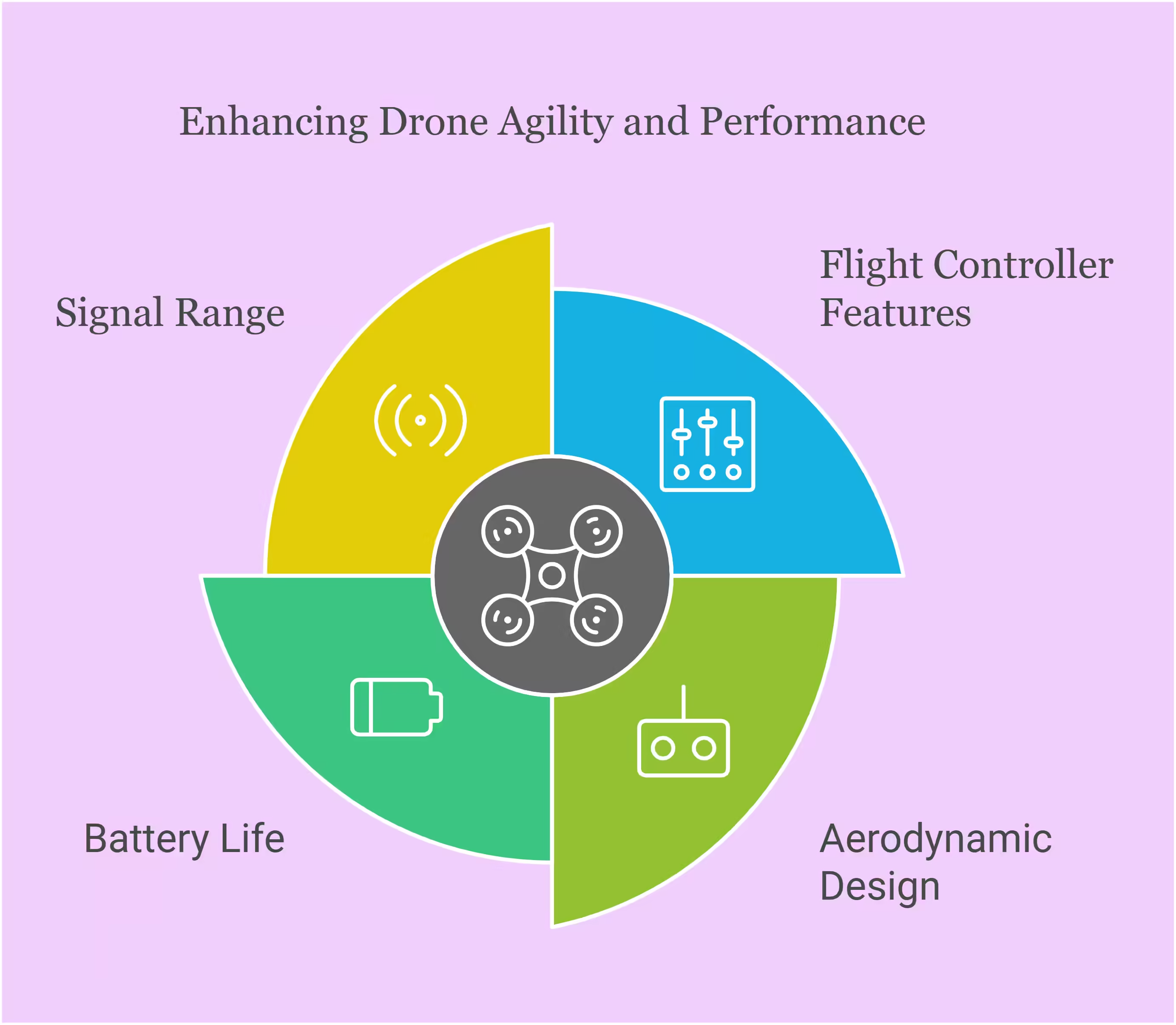Lightweight racing drones are designed for speed and agility, making them ideal for competitive drone racing. Their reduced weight enhances performance and maneuverability.
Lightweight racing drones have revolutionized the world of drone racing. These drones are engineered for optimal speed and precision. With a focus on minimizing weight, manufacturers use high-quality, durable materials. This results in drones that are not only fast but also highly responsive.
Enthusiasts and professionals alike appreciate the advanced technology and design that go into these drones. From novice racers to seasoned competitors, everyone can benefit from the enhanced agility and control. Lightweight racing drones offer an exhilarating experience, pushing the boundaries of what drones can achieve. Their innovation continues to drive the sport to new heights.
Key Features
Lightweight racing drones are revolutionizing the drone racing world. These drones offer agility, speed, and precision, making them a favorite among enthusiasts. Let’s dive into the key features that make these drones stand out.
Weight Considerations
The weight of a racing drone is crucial. A lighter drone accelerates faster and maneuvers more easily. Most racing drones weigh between 250 to 500 grams. This weight includes the battery and camera. Keeping the weight low ensures better performance and longer flight times.
Here are some key points about weight:
- Acceleration: Lighter drones accelerate quickly.
- Maneuverability: Easier to change direction.
- Flight Time: Longer due to less energy consumption.
Material Choices
The choice of materials impacts the drone’s weight and durability. Racing drones often use high-strength, lightweight materials. These materials ensure the drone is both light and robust.
Common materials include:
| Material | Characteristics |
|---|---|
| Carbon Fiber | Lightweight and strong, resists crashes. |
| Aluminum | Light and durable, good for frames. |
| Plastic | Lightweight, often used for casings. |
Using the right materials ensures the drone performs well. This balance is essential for competitive racing.
Speed Factors
Speed is crucial for racing drones. Various factors influence the speed of these drones. Understanding these factors helps optimize performance. Let’s dive into the key elements.
Motor Specifications
The motor is the heart of a racing drone. Motor specifications directly affect speed and agility. KV rating is an essential specification. It represents RPM per volt. A higher KV rating means faster motor rotation. Weight also matters. Lighter motors help the drone accelerate quickly. Torque is another vital factor. High torque improves control and stability.
Propeller Design
Propeller design significantly impacts speed. Size and pitch are key elements. Larger propellers generate more thrust. But, they may reduce agility. Higher pitch means more speed but needs more power. Material affects performance too. Carbon fiber propellers are lightweight and durable. They enhance speed and efficiency. Number of blades also matters. Two-blade propellers are faster. Three-blade propellers offer better stability.
| Motor Specification | Impact on Speed |
|---|---|
| KV Rating | Higher rating means faster RPM |
| Weight | Lighter motors accelerate faster |
| Torque | High torque improves control |
| Propeller Design | Impact on Speed |
|---|---|
| Size | Larger size generates more thrust |
| Pitch | Higher pitch means more speed |
| Material | Lightweight materials enhance speed |
| Number of Blades | Two blades are faster |
Lightweight racing drones are famous for their agility and maneuverability. These drones can zip through the air, making quick turns and smooth moves. Let’s dive into what makes these drones so agile and easy to control.
Flight Controllers
Flight controllers are the brain of the drone. They process data from sensors and make the drone stable. The lighter the flight controller, the more agile the drone becomes. Advanced flight controllers allow pilots to perform amazing stunts and sharp turns.
- Gyroscope: Helps maintain balance and stability.
- Accelerometer: Measures the speed and direction of the drone.
- Barometer: Helps in maintaining altitude.
Having a powerful flight controller with these features ensures better maneuverability and precision.
Aerodynamic Design
The design of the drone impacts its agility. A sleek and aerodynamic design reduces air resistance. This allows the drone to cut through the air more efficiently.
| Feature | Impact on Agility |
|---|---|
| Lightweight Frame | Enhances speed and quick turns. |
| Streamlined Shape | Reduces drag and boosts performance. |
| Compact Size | Improves maneuverability in tight spaces. |
All these design elements contribute to the drone’s incredible agility and responsiveness.
Performance Metrics
Understanding the performance metrics of lightweight racing drones is crucial. These metrics help in choosing the best drone for competitive racing. This section breaks down key performance aspects like battery life and signal range.
Battery Life
Battery life is a critical metric for racing drones. A longer battery life allows for extended flight times and more practice runs. Here are some key points:
- Capacity: Measured in mAh, higher capacity means longer flight.
- Weight: Lighter batteries can improve overall drone speed.
- Charge Time: Faster charging means less downtime between flights.
Below is a table summarizing popular battery options:
| Battery Type | Capacity (mAh) | Weight (g) | Charge Time (mins) |
|---|---|---|---|
| Lipo 4S | 1500 | 180 | 45 |
| Lipo 6S | 2200 | 280 | 60 |
Signal Range
Signal range determines how far your drone can fly without losing control. It is vital for both safety and performance. Key factors include:
- Transmitter Power: Higher power allows for greater range.
- Antenna Quality: Better antennas provide stronger signals.
- Frequency: Higher frequencies can offer more range but may face interference.
Here is a list of common frequencies used:
- 2.4 GHz: Standard, good range, some interference.
- 5.8 GHz: Shorter range, less interference, ideal for racing.
Choosing the right frequency and equipment can give you a competitive edge.
Building A Racing Drone
Creating your own lightweight racing drone can be thrilling and rewarding. It gives you control over the components and design. Plus, it’s a great way to learn about drone technology. Below, we will guide you through the essential components and provide helpful assembly tips.
Essential Components
To build a racing drone, you need several key components:
- Frame: The skeleton of your drone. Choose a lightweight and durable frame.
- Motors: These power your drone. Opt for high-speed brushless motors.
- ESCs (Electronic Speed Controllers): These control the speed of the motors. Ensure they match your motor specifications.
- Flight Controller: The brain of your drone. It processes inputs and stabilizes flight.
- Propellers: They generate lift. Select props that match your motors and frame size.
- Battery: Powers the drone. Choose a high-capacity, lightweight battery.
- FPV Camera and Transmitter: Provides real-time video feed. Essential for racing.
- Radio Transmitter and Receiver: Allows you to control the drone.
Assembly Tips
Here are some tips to help you assemble your racing drone:
- Plan your layout: Arrange all components on the frame first.
- Soldering: Use a fine-tipped soldering iron. Ensure solid connections.
- Mounting Motors: Secure them firmly on the frame. Use thread lock on screws.
- Connecting ESCs: Solder ESCs to motors and flight controller. Double-check polarity.
- Installing Flight Controller: Mount it using soft mounts to reduce vibrations.
- Propellers: Attach them after all electronics are set up. Ensure they are balanced.
- Battery Placement: Position the battery for optimal weight distribution.
- Testing: Test all connections before flight. Check motor rotation and flight controller settings.
Building a racing drone requires patience and precision. Follow these steps for a successful build.
Popular Models
Lightweight racing drones are the top choice for drone racing enthusiasts. They offer speed, agility, and ease of control. In this section, we will explore some of the most popular models available today.
Top Brands
The top brands in the lightweight racing drone industry are known for quality and performance. Here are a few:
- DJI: Known for their advanced technology and reliable drones.
- Blade: Offers high-quality racing drones with excellent performance.
- Holy Stone: Provides affordable yet efficient racing drones.
User Reviews
Users often share their experiences with these drones. Below are some reviews from enthusiasts:
| Model | Review | Rating |
|---|---|---|
| DJI FPV | Amazing speed and control. Easy to maneuver. | 4.8/5 |
| Blade Inductrix | Great for beginners. Stable and fast. | 4.5/5 |
| Holy Stone HS720 | Good value for money. Durable and responsive. | 4.3/5 |
Future Trends
The future of lightweight racing drones is promising. As technology advances, racing drones become faster and more efficient. This section explores future trends in lightweight racing drones.
Technological Advancements
Technological advancements are revolutionizing racing drones. Here are some key trends:
- Improved Battery Life: New battery technologies increase flight time.
- Enhanced Propulsion Systems: Stronger motors provide better speed and control.
- Advanced Materials: Lightweight carbon fiber reduces weight and increases durability.
- AI Integration: AI helps with navigation and obstacle avoidance.
These advancements are making drones more competitive in races.
Market Growth
The racing drone market is growing rapidly. Several factors are contributing to this growth:
| Factor | Impact |
|---|---|
| Increased Popularity: | More people are getting interested in drone racing. |
| Affordable Pricing: | Lower costs make drones accessible to more people. |
| Technological Improvements: | Better technology makes racing more exciting. |
| Global Competitions: | International events attract a wider audience. |
These factors indicate a bright future for the racing drone market.
Frequently Asked Questions
What Are Lightweight Racing Drones?
Lightweight racing drones are agile, high-speed drones designed for competitive racing. They are built with lightweight materials for better performance and speed.
Why Choose A Lightweight Racing Drone?
Lightweight racing drones offer improved agility and speed. They provide better control and responsiveness, enhancing the racing experience.
How Fast Can Lightweight Racing Drones Go?
Lightweight racing drones can reach speeds up to 100 mph. Their lightweight design helps achieve these high speeds quickly.
What Materials Are Used In Lightweight Racing Drones?
Lightweight racing drones are made from carbon fiber, plastic, and lightweight metals. These materials ensure durability and reduced weight.
Conclusion
Embracing lightweight racing drones elevates your flying experience. These agile machines offer speed, control, and unmatched excitement. Investing in a high-quality drone ensures thrilling races and improved skills. Explore various models, and choose one that suits your needs. Happy flying!




